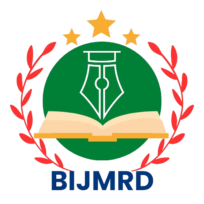Author: Ajija Sultana
DOI Link : https://doi.org/10.70798/Bijmrd/020500013
Abstract: India has a multi-party system with predominance of small regional parties. Political parties that wish to contest local, state or national elections are required to be registered by the Election Commission of India (EC). In order to gain recognition in a state, the party must have had political activity for at least five continuous years, and send at least 4% of the state’s quota to the Lok Saba (India’s Lower house), or 3.33% of members to that state’s assembly. These conditions are deemed to have failed if a member of the LokSabha or the Legislative Assembly of the State becomes a member of that political party after his election. If a party is recognized in four or more states, it is declared as a “National party” by the EC. Otherwise, it is known as a State Party. All parties contesting elections have to choose a symbol from a list of available symbols offered by the Election Commission. All 28 states along with the union territory of Pondicherry and the National Capital Territory of Delhi usually have an elected government unless President’s rule is imposed under certain conditions. A party is easily identified as a regional party if it propagates the ideology of regionalism or thrives on invocation of regional pride. Regional parties are parties whose main holds are in one certain state and mostly they participate in the elections only within that state. Most of these regional parties have agenda fitting certain culture dominant within that state. Some of these regional parties also participate in neighboring states, which have constituencies with culture similar to the first state. Different state parties were established at different periods because of different reasons. Some even have origins prior to India’s independence.
Keywords: Girls’ Education, Women Empowerment, Human Capital.
Page No : 104-107
